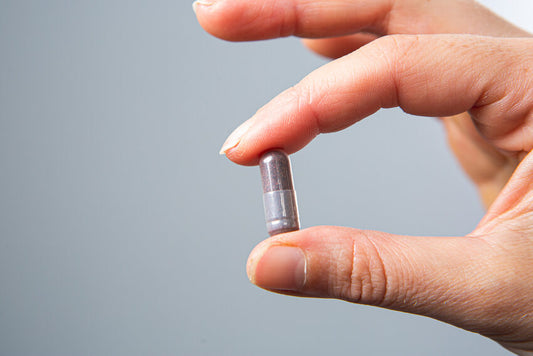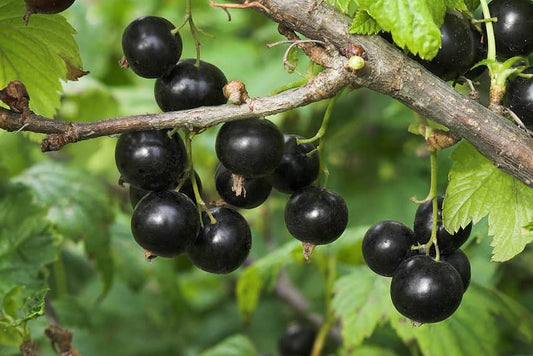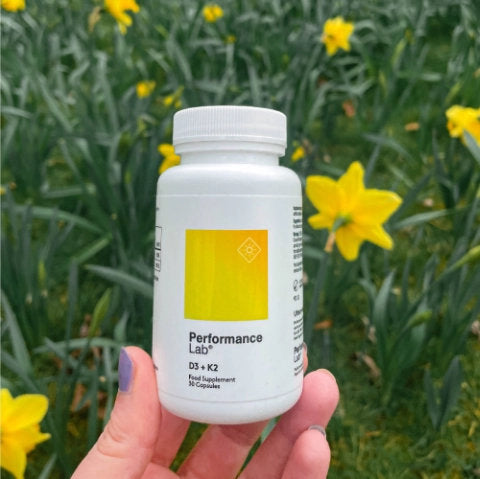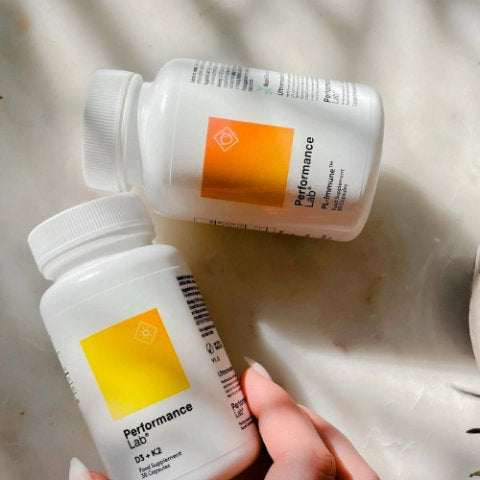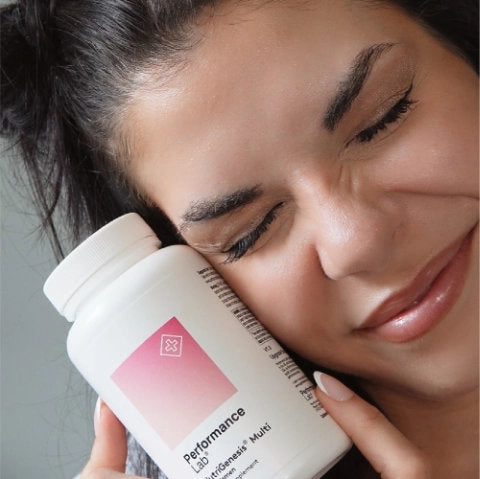Vitamin K2 is kind of like the underdog of the vitamin world. You see it here and there, but it's often not one you hear about and not something most people know the importance of.
But K2 deserves the spotlight for a minute.
According to available research, it could be the missing link between diet and disease.
However, when it comes to K2 and eye health, there isn't an enormous body of research to draw from, but we're going to let you in on what we do know.
What Is Vitamin K2?
A Danish scientist named Henrik Dam discovered vitamin K. Through his work with chickens, he found this new vitamin that was fat soluble, heat-stable, and naturally occurring in both animal and plant tissue. This anti-hemorrhagic agent was to be called 'Koagulations vitamin' or vitamin K 1.
Vitamin K is a fat-soluble vitamin that was first discovered in 1936 to be one of the most critical vitamins required for blood coagulation. Naturally, vitamin K comes in two vitamers 2:
- Vitamin K1 (phylloquinone): plant-derived
- Vitamin K2 (menaquinone): animal-derived and fermented foods
K1 vs K2
The structural differences between vitamin K1 and K2 are seen in their different absorption rates, tissue distribution, and bioavailability 2.
However, they both act as a co-factor for the enzyme gamma-glutamylcarboxylase, which plays a role in both hepatic and non-hepatic activities.
Vitamin K2 is also further divided into subtypes: short-chain (menaquinone-4; MK-4) and long-chain (MK-7, MK-8, and MK-9). Of the menaquinones, MK-7 is the most bioavailable and also absorbed most efficiently 2.
In a comparison of absorption rates between K1 and MK7, both were readily absorbed within two hours of ingestion.
However, postprandial serum concentrations of K2 (MK-7) were nearly 10 fold that of K1 4.
K1 was also less well absorbed than MK4, MK8, and MK9. It's also been shown that certain menaquinones have a longer half-life of circulation than K1, meaning it remains in circulation longer for absorption by extrahepatic tissue.
In general, menaquinones (K2) are more bioavailable than K1 and elicit more health benefits, so ensuring an adequate intake of both K1 and K2 is key.
The Role Of Vitamin K In The Body
One of the most well-recognized functions of vitamin K1 in the body is as a co-factor in the activation of vitamin-K dependent coagulation factors and thus plays a prominent role in blood clotting 3.
While K1 is the most widely consumed form of vitamin K, the beneficial effects of vitamin K in the body are attributed mainly to vitamin K2.
It's available in several food sources, but various strains of bacteria also synthesize menaquinones, with the exception being MK-4.
Based on available research, there are numerous benefits to the supportive role of K2 in the body, including 2, 5:
- Cardiovascular disease: K2-dependent proteins activate protective mechanisms that prevent vascular calcification. It is also involved in calcium transport and preventing calcium deposition in blood vessel walls.
- Bone health: Vitamin K2 improves bone quality and density, which helps to reduce fracture risk.
- Diabetes: The mechanism is not well known, but research suggests K2 activates osteocalcin, which promotes proliferation of pancreatic beta cells and increases insulin production.
- Cancer: K2 supplementation may help prevent the growth and metastasis of multiple cancer cell lines by acting on several pathways, including protein kinase A, protein kinase C, NF-kB, and steroid xenobiotic receptors.
- Immune health: K2 may play an immunomodulatory role by modulating the expression of things like TNF-α, IL-1α and IL-1β. It may also decrease the number of activated T-cells, as well as T-cell proliferation.
K2 And Your Eyes
Vascular Calcification
As we mentioned before, there isn't much scientific support for the link between K2 and eye health. However, we know that vitamin K's role in calcium transport is its most significant role in ocular health.
But despite little available research, vitamin K2 is essential to eye health because it prevents excessive vascular calcification that can cause age-related stiffness and atherosclerotic plaques that form in the blood vessels of the heart, kidneys, and retina.
Vitamin K2 (MK-7) is the only compound known to impact arterial calcification through its activation of Matrix GLA Protein (MGP), which is a potent inhibitor of vascular calcification.
MGP is abundantly expressed in the eyes, where its role is to preserve and protect the structural integrity of the trabecular meshwork, sclera, and retinal ganglion cells 6.
Antioxidant Activity
Where K2 may also come into play is with its antioxidant properties. Research shows that Vitamin K-hydroquinone is a potent radical scavenging species that may help to protect cells in the eye from damage because of excess free radicals via a process called lipid peroxidation 7.
Because fats are concentrated in the eyes, they're highly susceptible to damage, so adequate intake of antioxidants is critical to keep them protected.
Where You Can Find It
With all of that said, if you're looking to add vitamin K to your diet, it's widely available in both animal and plant sources. However, K2 is primarily found in animal foods.
Here are your best sources 5:
- K1—Spinach (boiled), broccoli (cooked), asparagus (cooked), red/green grapes, plums, kidney beans
- K2—Natto (fermented soy), hard and soft cheese, egg yolks, butter, liver, poultry, beef, sauerkraut, fermented dairy products (kefir)
Think about this, though: why not boost the antioxidant capacity of vitamin K and protect your eyes better by stacking it with Performance Lab Vision.

Vision is a unique blend of six powerful antioxidants designed to enhance focus speed, motion detection, night vision, and more.
With lutein and zeaxanthin plus purified extracts of bilberry, blackcurrant, and saffron, Vision uniquely supports both dynamic eyesight and long-range eye health.
And what's more, it's all delivered in prebiotic-infused, vegan-friendly NutriCaps® made from pullulan (fermented tapioca) for easy digestion and complete absorption.
References
- P Newman, MJ Shearer. Vitamin K Metabolism. In: Quinn P.J., Kagan V.E. (eds) Fat-Soluble Vitamins. Subcellular Biochemistry, vol 30. Springer, Boston, MA. 1998.
- M Halder, P Petsophonsakul, AC Akbulut, et al. Vitamin K: Double Bonds beyond Coagulation Insights into Differences between Vitamin K1 and K2 in Health and Disease. Int J Mol Sci. 2019;20(4):896.
- RE Olson. The function and metabolism of vitamin K. Annu Rev Nutr. 1984;4:281-337.
- LJ Schurgers, C Vermeer. Determination of phylloquinone and menaquinones in food. Effect of food matrix on circulating vitamin K concentrations. Haemostasis. 2000;30(6):298-307.
- GK Schwalfenberg. Vitamins K1 and K2: The Emerging Group of Vitamins Required for Human Health. J Nutr Metab. 2017;2017:6254836.
- FF Wei, QF Huang, ZY Zhang, et al. Inactive matrix Gla protein is a novel circulating biomarker predicting retinal arteriolar narrowing in humans. Sci Rep. 2018;8(1):15088.
- LM Vervoort, JE Ronden, HH Thijssen. The potent antioxidant activity of the vitamin K cycle in microsomal lipid peroxidation. Biochem Pharmacol. 1997;54(8):871-876.


